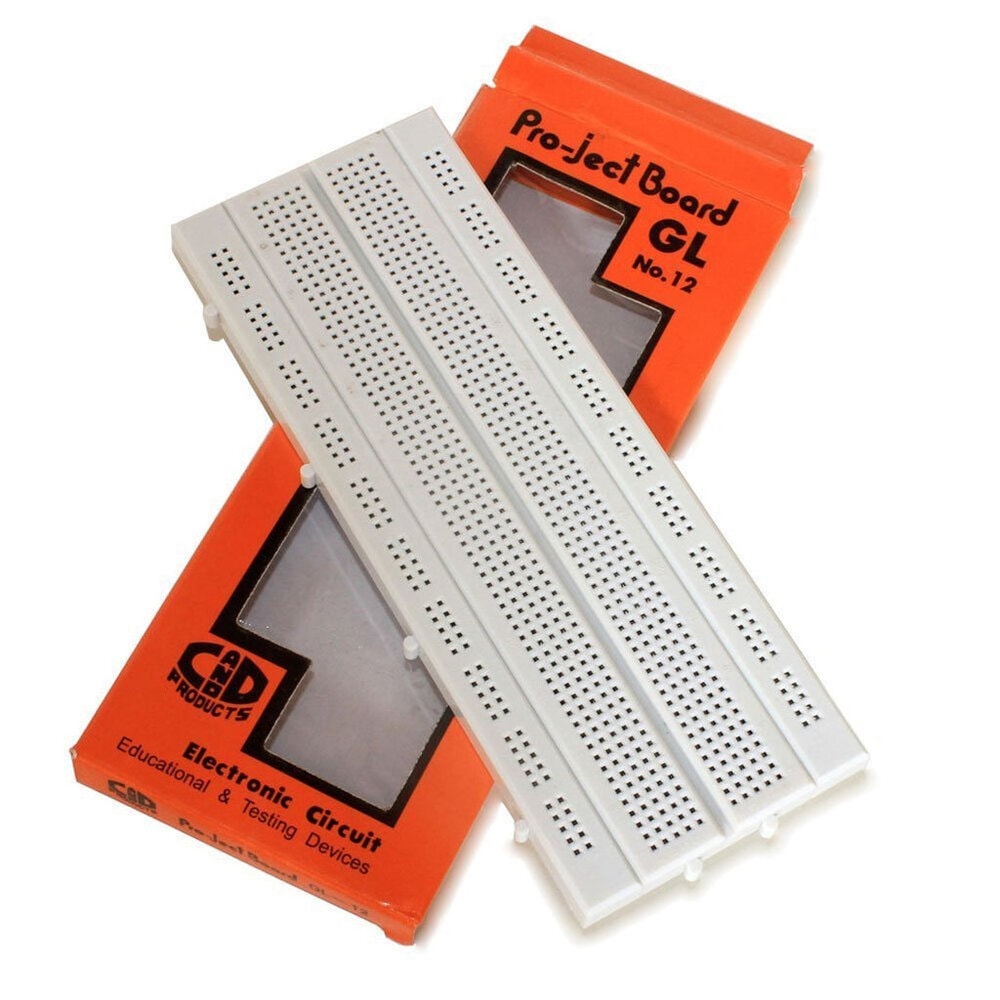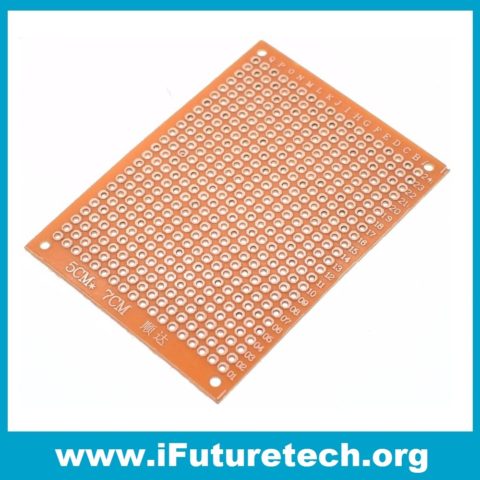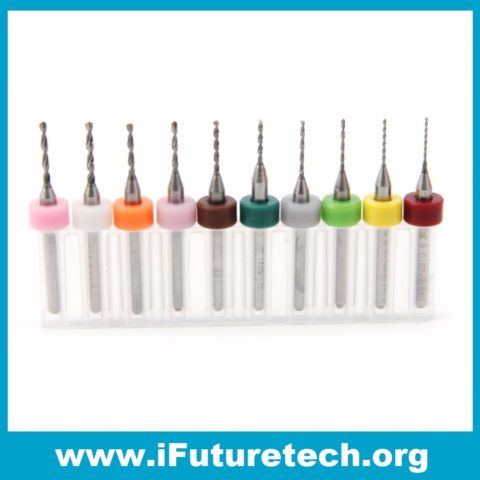Frequently Bought Together
GL12 840 Points Solderless Breadboard provides a crucial, reusable platform for prototyping and experimenting with electronic circuits without soldering. This high-quality breadboard, often referenced by its model number GL12, features 840 contact points, offering ample space and flexibility for medium to complex circuit designs involving microcontrollers, sensors, and passive components. Consequently, engineers, students, and hobbyists effectively utilize the GL12 for rapid circuit assembly and testing. The breadboard simplifies the process of making temporary electrical connections by simply plugging components into the terminal strips and bus strips. Furthermore, its robust plastic body and metal contact clips ensure reliable conductivity and long operational life, making it an indispensable tool on any electronics workbench.
Key Features:
- High-Density Contact Points: Features 840 total tie points, including 640 terminal points and 200 bus points, supporting comprehensive circuit construction.
- Solderless Operation: Easily build, modify, and test circuits by simply inserting component leads and jumper wires, eliminating the need for permanent connections.
- Integrated Power Rails: Includes two dedicated bus strips with red and blue lines for VCC and GND connections, simplifying power distribution throughout the circuit.
- ABS Plastic Body: The durable main body utilizes high-quality ABS plastic, ensuring excellent insulation and mechanical stability.
- Interlocking Design: You can quickly and securely connect multiple GL12 breadboards side-by-side using the molded dovetail grooves for larger projects.
Technical Specifications:
- Total Tie Points: 840 points (640 terminal, 200 bus)
- Terminal Strip (IC Area): 64 columns x 5 rows (320 holes) x 2 sides = 640 points
- Bus Strip (Power Rails): 2 columns x 25 rows (50 holes) x 4 rails = 200 points
- Maximum Voltage Rating: 300 VRMS (Non-continuous, dependent on wire/component insulation)
- Maximum Current Rating: ≈ 1 A per node (Maximum 3 A total)
- Wire Size Acceptance: 20 to 29 AWG (≈ 0.3 mm to 0.8 mm diameter)
Mechanical Specifications:
- Contact Material: Phosphor Bronze or Nickel Silver alloy spring clips (Ensuring low-resistance connection)
- Base Material: ABS Plastic (High-impact and temperature resistant)
- Markings: Printed coordinates (Rows 1-64, Columns a-j) for easy component placement reference.
- Adhesive Backing: Peel-and-stick foam backing is often included, allowing fixed placement on a base plate or work surface.
Dimensions:
- Board Length: ≈ 165.5 mm (6.5 inches)
- Board Width: ≈ 54.5 mm (2.1 inches)
- Board Thickness (Excluding feet): ≈ 8.5 mm
- Pin Pitch: 2.54 mm (0.1 inch standard IC spacing)
Pinout and Wiring:
- Terminal Strips: Five horizontal holes (a-e and f-j) connect electrically, allowing you to insert component leads or jumper wires in any of these five holes to connect them.
- Bus Strips: All vertical holes within a single column (marked with a red/blue line) connect electrically, making them ideal for distributing power and ground.
- Center Channel: The central horizontal groove separates the two terminal strips, consequently accommodating DIP (Dual In-line Package) integrated circuits (ICs).
- Wiring Note: Ensure components sit firmly in the holes, using solid-core jumper wire for best contact reliability and structural integrity during prototyping.
Datasheet Reference:
- Download General Solderless Breadboard Specifications
Commonly Used in:
- Academic Laboratories: Educators use these boards extensively for teaching basic and advanced electronics principles to students.
- DIY and Hobbyist Projects: Provides a quick and non-destructive method for building circuits for personal use or experimentation.
- Microcontroller Development: Serves as the primary platform for testing peripherals, sensors, and shields with Arduino, Raspberry Pi Pico, and other embedded systems.
Applications:
- Proof-of-Concept Prototyping: Quickly test circuit theories and validate component choices before moving to a printed circuit board (PCB).
- Troubleshooting Circuits: Easily isolate and replace components to diagnose faults in a temporary setup.
- Functional Demonstrations: Create temporary, functional circuits for presentations or educational displays.
- Sensor Interfacing: Therefore, use it to connect and test various digital and analog sensors with an MCU.
Equivalent Models:
- MB-102: A widely available model that shares the same 830/840 tie point configuration and mechanical layout.
- Zelux ZY-60: Similarly, this model offers identical hole spacing and capacity, functioning as a direct functional equivalent.
- BB830: Another common designation for this standard-size breadboard.
Package Includes:
- 1 x GL12 840 Points Solderless Breadboard
Additional information
| Weight | 110 g |
|---|








Reviews
There are no reviews yet.